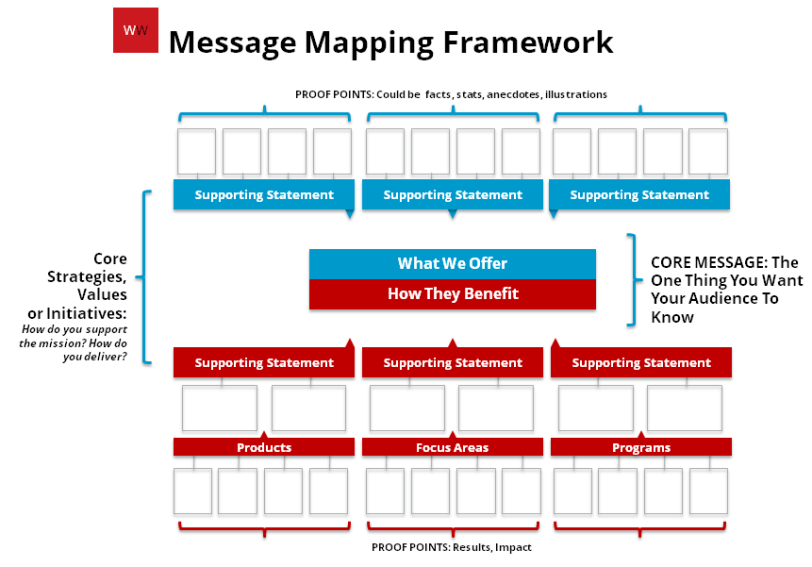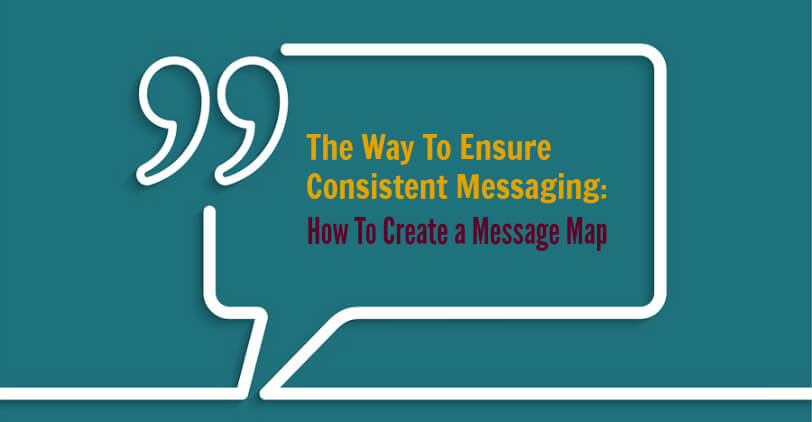Every good communicator can benefit from creating and using a message map. It’s the ultimate guide to help steer your staff, your leaders and yourself through conversations about your nonprofit – whether they’re at a party or being interviewed by the media. As the “captain” of the messaging ship at your organization, you want your team to represent your cause (brand) in a consistent way, answer questions honestly and concisely and make sure they are not reinventing the way they represent your cause.
It’s probably likely that you have terrific stories about the impact your nonprofit is driving, but everyone has a different one and a different way of telling it. And it’s also likely that each time a story is told it’s not being connected to the right points about how you’re delivering your mission and the way it’s helping those you serve. It’s sometimes hard to know what issues to focus on when explaining all that you do!
Enter one of the most helpful tools in your communications toolbelt—the message map. Think of the Message Map as establishing the message by topic. A Message Map will include an overarching core message and subset messages. Consider it a roadmap that keeps the story on point and relevant to the audience.
It looks daunting to both create and follow (see image below), but it’s really quite simple if you know how it works.

1. You start at the very center with your main message, which in most cases will be your mission statement.
2. And from there you move out to the supporting information, either focusing on what you offer (in teal) or how those you serve benefit (in red).
3. From there, move out branch by branch to supporting statements and then cap it off with details and personal anecdotes.
Then, you follow the map from the center out to create your messaging. For example:
[Your Nonprofit] helps [mission statement] (center boxes). We help [supporting statement-teal] in a number of ways, including focusing on [teal branch]. That means, we focus [insert proof points-teal]. A great example is [supporting statement-red]. [Insert something you know personally about that particular “product” here.]
Here are some other great resources from around the web about message mapping:
Media Masters on mapping (including diagram) and accompanying blog post
Step by Step instructions on creating a message map (from the for-profit point of view)
An interesting take on a message map summary
7-Page handbook on message mapping
8 Steps to creating a crisis communications message map
Social media message mapping (the last half of this blog)
Using your Message Map will help you knowledgeably talk about your nonprofit (especially to the media), using accurate facts and staying on message, and also including specific examples of programs and activities you know about from your own experiences.



